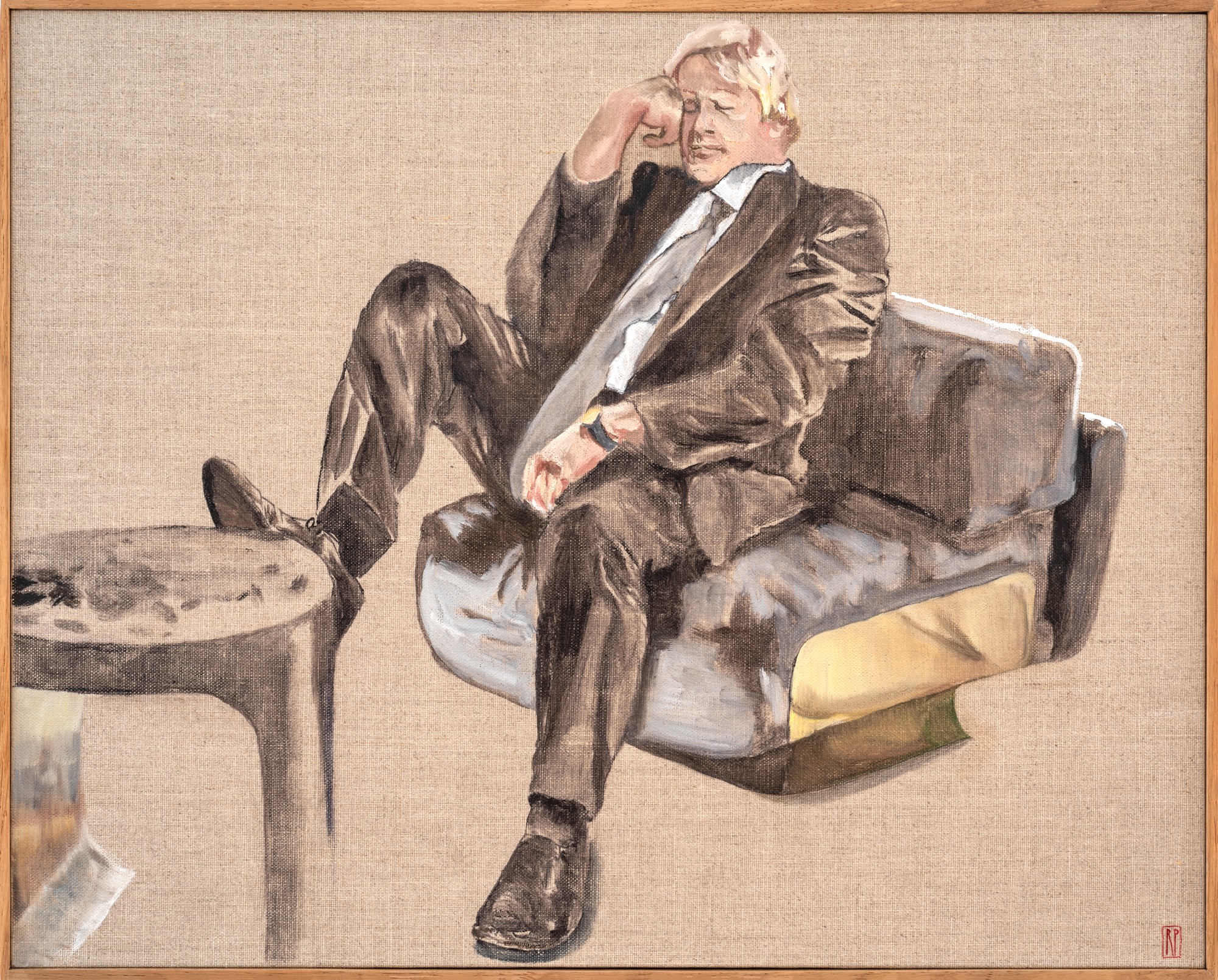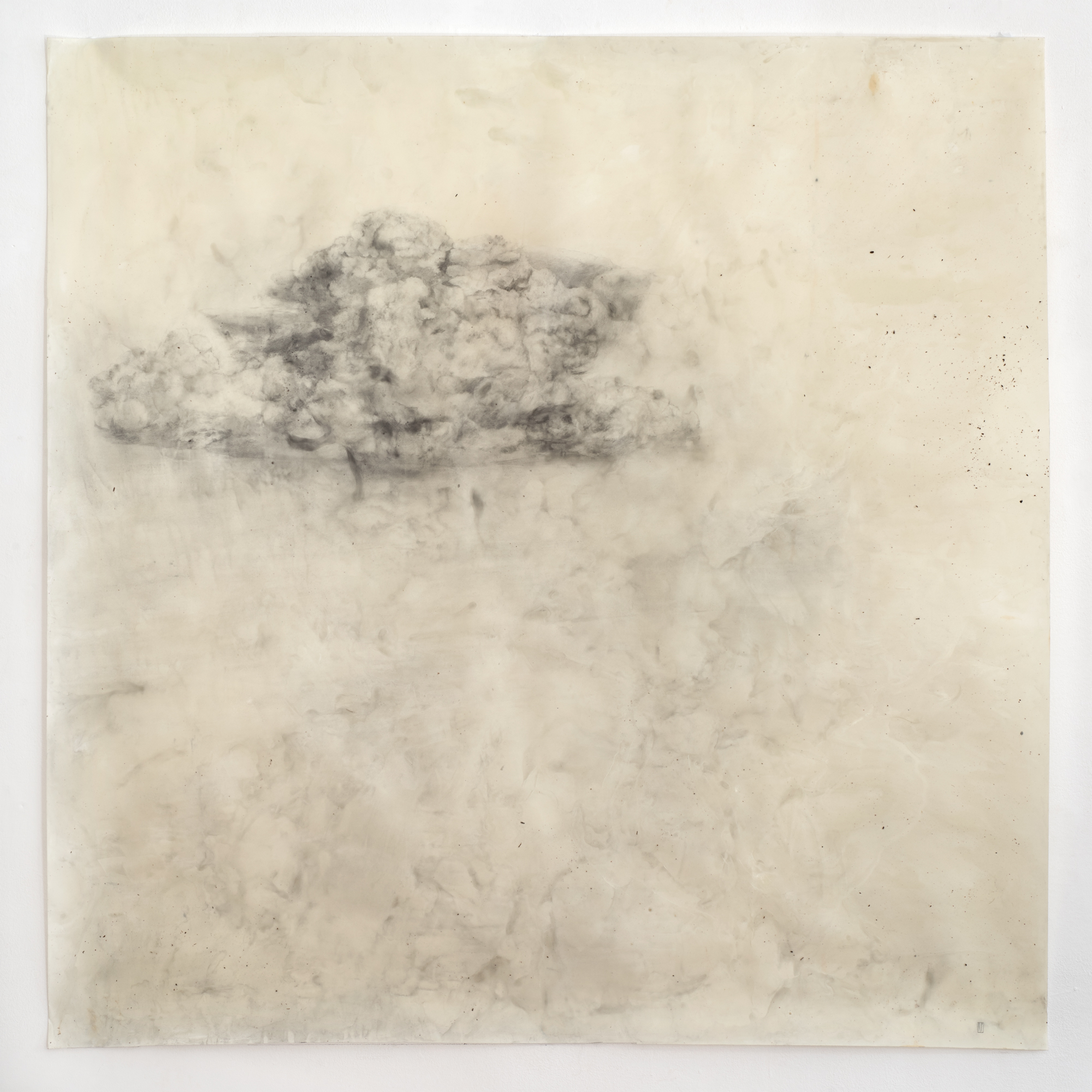ROBYN PENN | God’s Away on Business
4 – 26 August 2022
Nel, 117 Long Street, Cape Town Presented by FORMS Gallery in collaboration with Nel.
In God’s Away on Business, Robyn Penn brings together two new bodies of work that are strikingly different in content and execution, but come from the same critical view of global current affairs. Borrowing the title of the exhibition from a Tom Waits song, Penn invokes Waits’s leaden pessimism (“It’s all over, it’s all over, it’s all over”), but reminds us that in the midst of crisis and collapse, there can be lightness, humour and sublime beauty.
It is this notion of the sublime that Penn uses to guide us into her work. The concept has circulated in different cultures since ancient times, but its articulation in the Western aesthetic tradition is most succinctly put by the English writer John Addison. On encountering the Italian Alps on several occasions at the turn of the 17th century, he wrote of feeling “an agreeable kind of horror”.
Penn is interested in the points at which Western constructs of natural beauty give way to a sense of horror or threat. In her new drawings of clouds, she works with a uniquely rich surface of graphite and encaustic wax, which gives a sense of depth that is at once ominous and awe- inspiring. The ambiguity of these works – are they inviting or threatening? – is a line Penn has walked in past bodies of work as well, and points to our complex relationship to nature in the context of the climate crisis. At the level of policy and in everyday life, the human race exploits the environment while claiming a connection to nature along nationalist, corporate or existential lines.
Penn’s series of portraits of political figures asleep or at leisure references the apathy of world leaders in the face of the various world crises they are instrumental in perpetuating. At the same time, however, these portraits imagine their subjects in a state of unwitting vulnerability. They seem peaceful, harmless, human even. Their rendering in oil paint is seductive, virtuosic. These are “agreeable” paintings, to return to Addison’s language, of horrible men, and they provide the key to the tension that underlies many, if not all, of Penn’s works. Are these subjects beautiful or terrible? Does the fact that the horrible men are sleeping make things better or worse?

The Dreamer (Kim Jong-Un)
2022
oil on linen board
40 x 50 cm

Reclining Nude (Boris)
2022
oil on linen board
40 x 50 cm

The Nude (Vlad)
2022
oil on linen board
40 x 50 cm

Reclining Nude (Donald)
2022
oil on linen board
40 x 50 cm

Dead Man (Narenda)
2022
oil on linen board
40 x 50 cm

The Clothed (Jair)
2022
oil on linen board
40 x 50 cm

Los Caprichos
2022
Encaustic and graphite on Hanemühle paper
150 x 150 cm

Hold Time IV
2022
Encaustic and graphite on Hanemühle paper
150 x 150 cm

Mother
2022
Encaustic and graphite on Hanemühle paper
150 x 150 cm

Hold Time III
2022
Encaustic and graphite on Hanemühle paper
150 x 150 cm

Hegel’s Cloud (We Are Defined by Our Finitude)
2022
Encaustic and graphite on Hanemühle paper
150 x 150 cm

Los Disparates
2022
Encaustic and graphite on Hanemühle paper
150 x 150 cm

Hold Time II
2022
Encaustic and graphite on Hanemühle paper
150 x 150 cm

Proxy II
2022
Encaustic and graphite on Hanemühle paper
28 x 37,5 cm